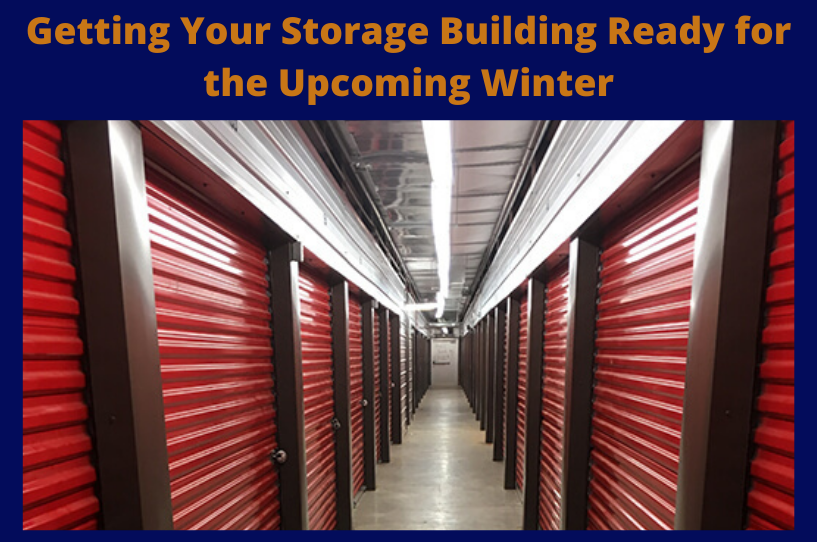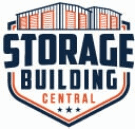Winter is knocking at the door, and it brings with it some tough challenges. If you don’t prepare, there may be issues with your storage building during the cold season. Some buildings are based indoors and are safe from the harsh winter environment. However, for outdoor buildings, you need to take some additional precautionary measures.
Storage buildings are extremely beneficial for those living in cold climates. In certain areas, the weather turns extremely cold during the winter. This makes it vital to store food and other essential items for emergencies. However, you must ensure the storage buildings are well-suited for the season to come.
During the summer, you need to shield your belongings from the sweltering heat and humidity. But what are the things you need to keep in mind for winter? Arguably, there are a lot more challenges compared to summer, and this is why it is wise to follow some expert tips.
A Few Winter Preparation Tips for Your Storage Building
You can’t slow down just because winter is around the corner. Preparing beforehand will save you a lot of trouble in the future. By following these simple tips, you can keep your belongings safe from inclement weather.
Consider Your Storage Building
First, you need to consider what type of storage building you have in your possession. Climate-controlled buildings are more expensive. If you have expensive items that need specific storage conditions, then it might be worth investing in them. To control the temperature effectively, the entire building must have central heating and cooling. This might create some accessibility issues.
Sometimes, temperature-controlled buildings might not be near your home. In this case, you need to invest in weatherproof locks to ensure the safety of your belongings. It is much easier to find a non-climate controlled storage building close to your residence. However, you might need to install some insulation for the building depending on the items you’re storing.
Prepare for Flooding
It is quite common for snow to accumulate inside your storage building. With time, the snow will thaw, and this may lead to flooding. If you have goods inside your building that you don’t want to get wet, you must consider this possibility.
If there is a risk of flooding, you should consider storing your items in pallets. Simply placing your belongings on the ground can get them wet in the event of a flood. By using pallets, you’ll be storing the items at a certain height. This will ensure the water level does not reach your belongings.
Place Items in Watertight Containers
This is an additional measure you can take to protect your items against water in case of snow accumulation. It is a common practice to store goods in cardboard boxes. However, it is not ideal where water is involved. When exposed to water, the cardboard turns soggy, thus ruining all its contents.
It can be difficult to retrieve your belongings from a wet cardboard box. Therefore, it would be wiser to use waterproof plastic containers. These bins will prevent water from getting in, so you can reuse them multiple times. Additionally, plastic bins are considerably more durable compared to cardboard boxes.
Protect Temperature-Sensitive Items
Certain items don’t hold up in the cold too well, as they might react negatively to sudden shifts in temperature. The most common examples are delicate artwork and musical instruments. Electronics and devices using liquids are also susceptible to temperature changes.
If you have lawnmowers and similar items using fuel, you may consider using a fuel stabilizer. For a diesel engine, you should use an anti-gel when the temperature crosses the freezing point. Finally, if several items are temperature-sensitive, you may want to opt for a climate-controlled mini storage building.
Place Coverings Over Furniture
Metal, leather, fabric, and wood can have a negative reaction to the cold. As such, you should cover them with the proper material. You can use paper, woolen blankets, or cotton dust sheets for this purpose. If you are worried about the cold damaging your item, you can use an insulated covering.
It is not advisable to use plastic or bubble wraps. They can trap moisture and damage your items when there are temperature variations. For furniture, you can choose waterproof coverings. If you are worried about the roof leaking, then waterproofing is a must.
Grab What You Need
Before preparing your self-storage building, you must consider the things you need for the winter season. This may include warm clothes, snowboards, skis, sleds, etc. You can also store the things you won’t be needing for the cold season, such as summer clothes.
Make sure you pack your belongings safely before storing them. Dismantle the items and eliminate any moisture and dust before packing them. You can also move the items to the back, away from the door, to make more space.
Protect Against Pests
Some storage facilities have pest-control measures in place. Still, if you are worried about pest infestation, you can take certain precautions. Instead of using cardboard boxes, you can use plastic containers. Using racks will also prevent the pests from reaching the containers. For common pests, you can use over-the-counter repellants.
Keep Your Valuables Safe with Storage Building Central, Regardless of the Season
Hopefully, these tips will help you get your storage building ready for the unforgiving winter season. At Storage Building Central, we proudly stand behind our 20 years of industry experience as an example of our quality and expertise. Our skilled team can help you find the perfect storage building for your needs. In addition, we offer delivery throughout the United States.
We have a team of dedicated professionals and offer excellent customer service. You can easily customize the features of your building and obtain easy financing options as well. If you are looking for a storage building at affordable rates, look no further than Storage Building Central. Get in touch with us today at +1 (844) 315-3151 and earn some much-needed peace of mind by leaving the hard part to the experts.


